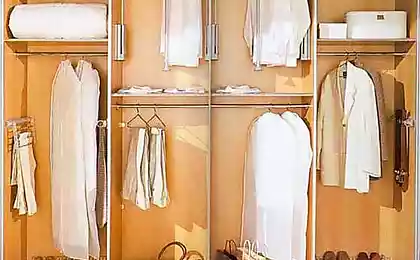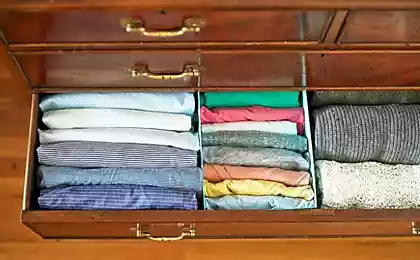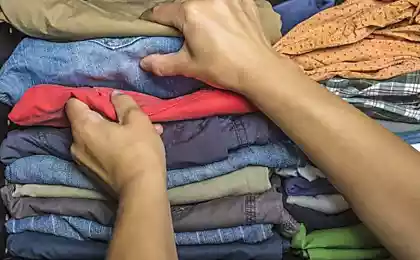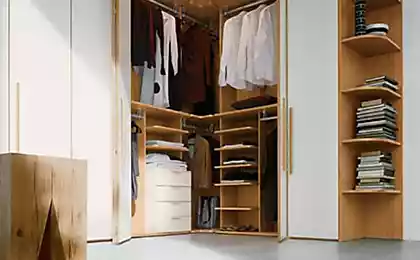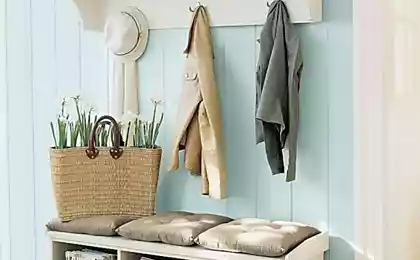477
Clothes storage — 7 of the rules of ergonomics
Regardless of whether you fill the wardrobe closet or dressing room, main requirements to the shelves and drawers remain unchanged. The reason is simple: in the wardrobe of every man about the same (can you say – typical) set of clothes and shoes, respectively, devices for their storage needs are the same. We will tell you what and what size you need to be correct from the point of view of ergonomics cupboard, and you have to decide on what scale to implement these ideas to fit your whole wardrobe.
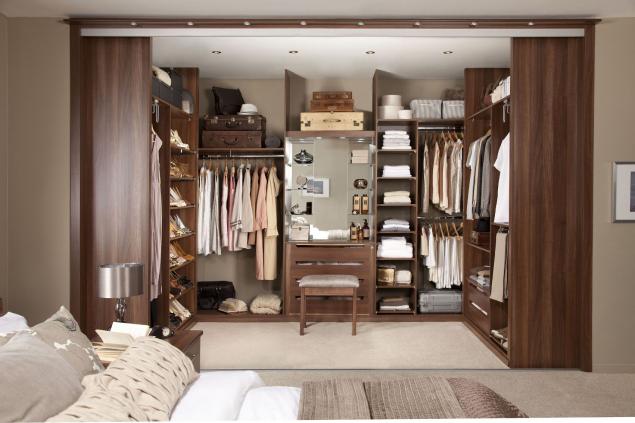
Rule 1. Who would you not advised, focus is always primarily on their own needs – their own and their families. This is the main rule convenient wardrobe. To make a long or short rod for a particular type of clothing, design, wooden shelves or metal drawers, to place the compartments in this or a different order – you decide. Everything written below is a recommendation, not a direct guide to action.
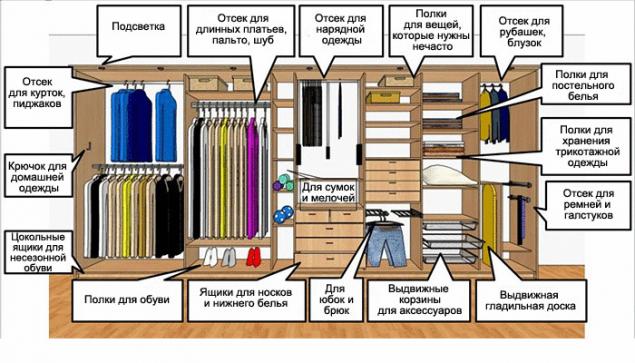
Rule 2. Long clothes (coats, raincoats, fur coats, dresses, suits), require a compartment with a height of at least 175 cm keep in mind the time that the rod is mounted at a distance of 10-15 cm from the top of the compartment and another 10-20 cm of the margin should remain from the lower edge of the garment to the bottom of the compartment. Department for pants and skirts usually made with a height of 120-130 cm, for shirts, blouses, and jackets 100 cm. of Course, all these figures are adjusted depending on the growth of family members.
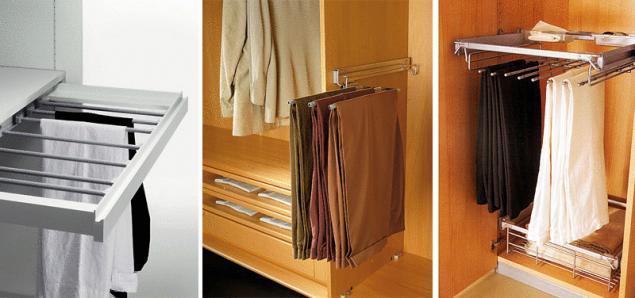
Rule 3. If a rod for hanging clothes feature highly, then they additionally supply special mechanism ("lift") which allows to lower them to a comfortable level. But most still above the rods have shelves of things that are used infrequently. This may be off-season clothing, disposable home textiles, Luggage, sports equipment etc.
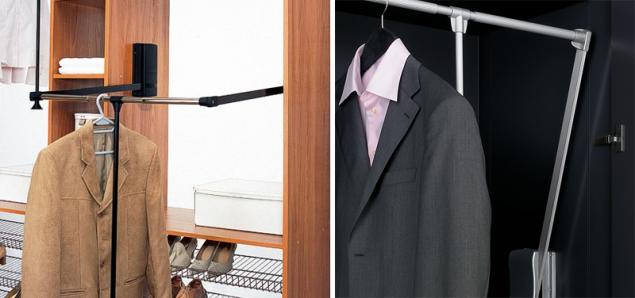
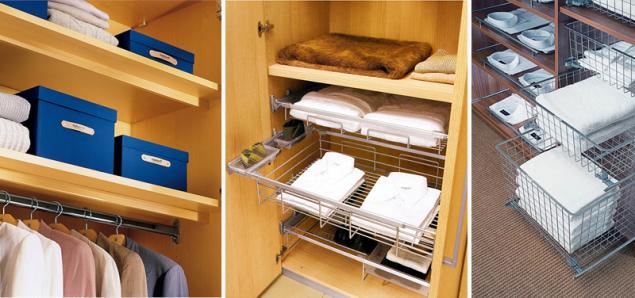
Rule 4. Storage of linen and towels it is better to use the highest possible shelf widths, but for small items (hats, bags, accessories) on the contrary suitable narrow separation with compact shelves – height of 15-17 cm and a depth of about 25 cm in order to understand how much space in width you need certain things, be guided by their dimensions folded. But the height is usually 25-30 cm.
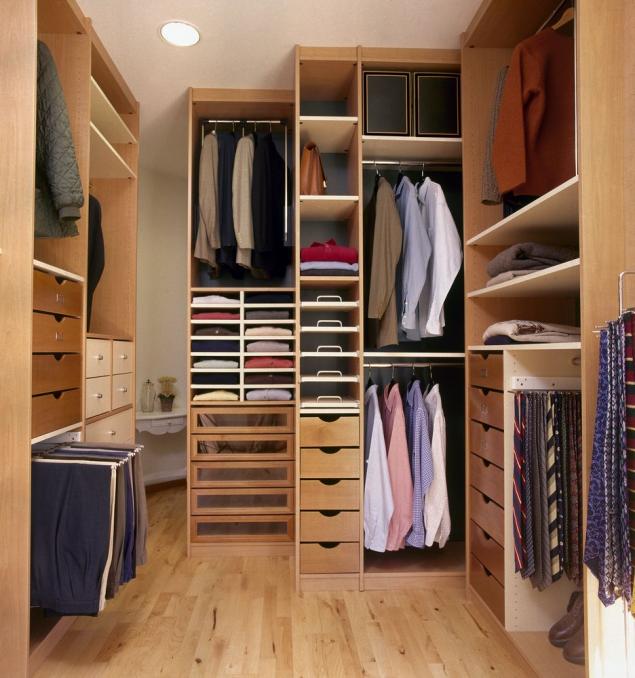
Rule 5. Store footwear in cardboard boxes is unprofitable – more compact it can be placed with the help of special racks or drawers. The distance between the shelves in height is recommended to maintain within 25 cm for summer shoes and 45 cm – for boots and shoes. Width one pair of shoes is about 25 cm, recommended width Shoe racks in the closet – 75-100 cm, But if you decide to store your shoes in boxes, it is better to choose special – transparent, with Windows or a place for notes. This will significantly reduce time searching for and will allow you to maintain order in the wardrobe.
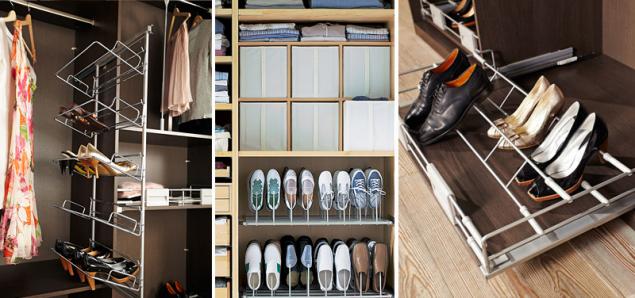
Rule 6. Tights, socks and underwear are best stored in shallow drawers, pre-dividing them into sections with a width of 10-15 cm Length are determined depending on the type of things, like for bras need section longer, and socks, enough square.
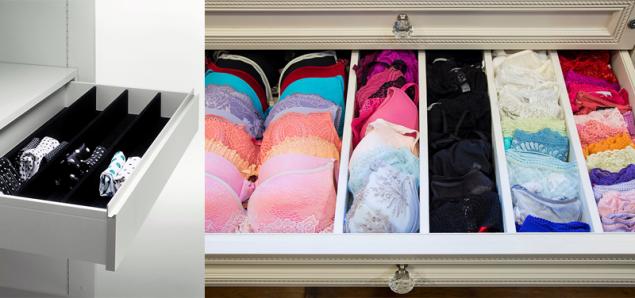
Rule 7. For storing small accessories, such as ties, belts, straps or shawls you can buy a special rod or a hanger, but hat and gloves are better to hide in the drawers – so less likely to lose them. published
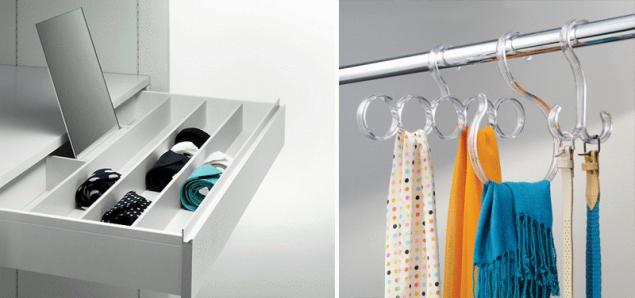
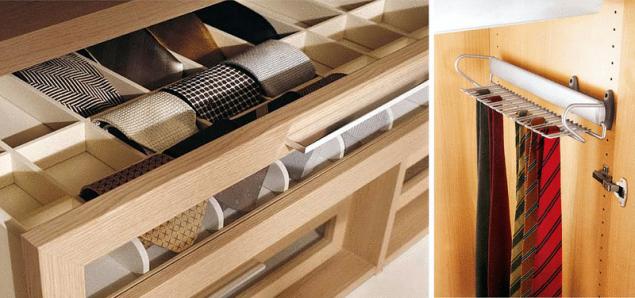
Source: oselya.net

Rule 1. Who would you not advised, focus is always primarily on their own needs – their own and their families. This is the main rule convenient wardrobe. To make a long or short rod for a particular type of clothing, design, wooden shelves or metal drawers, to place the compartments in this or a different order – you decide. Everything written below is a recommendation, not a direct guide to action.

Rule 2. Long clothes (coats, raincoats, fur coats, dresses, suits), require a compartment with a height of at least 175 cm keep in mind the time that the rod is mounted at a distance of 10-15 cm from the top of the compartment and another 10-20 cm of the margin should remain from the lower edge of the garment to the bottom of the compartment. Department for pants and skirts usually made with a height of 120-130 cm, for shirts, blouses, and jackets 100 cm. of Course, all these figures are adjusted depending on the growth of family members.

Rule 3. If a rod for hanging clothes feature highly, then they additionally supply special mechanism ("lift") which allows to lower them to a comfortable level. But most still above the rods have shelves of things that are used infrequently. This may be off-season clothing, disposable home textiles, Luggage, sports equipment etc.


Rule 4. Storage of linen and towels it is better to use the highest possible shelf widths, but for small items (hats, bags, accessories) on the contrary suitable narrow separation with compact shelves – height of 15-17 cm and a depth of about 25 cm in order to understand how much space in width you need certain things, be guided by their dimensions folded. But the height is usually 25-30 cm.

Rule 5. Store footwear in cardboard boxes is unprofitable – more compact it can be placed with the help of special racks or drawers. The distance between the shelves in height is recommended to maintain within 25 cm for summer shoes and 45 cm – for boots and shoes. Width one pair of shoes is about 25 cm, recommended width Shoe racks in the closet – 75-100 cm, But if you decide to store your shoes in boxes, it is better to choose special – transparent, with Windows or a place for notes. This will significantly reduce time searching for and will allow you to maintain order in the wardrobe.

Rule 6. Tights, socks and underwear are best stored in shallow drawers, pre-dividing them into sections with a width of 10-15 cm Length are determined depending on the type of things, like for bras need section longer, and socks, enough square.

Rule 7. For storing small accessories, such as ties, belts, straps or shawls you can buy a special rod or a hanger, but hat and gloves are better to hide in the drawers – so less likely to lose them. published


Source: oselya.net







